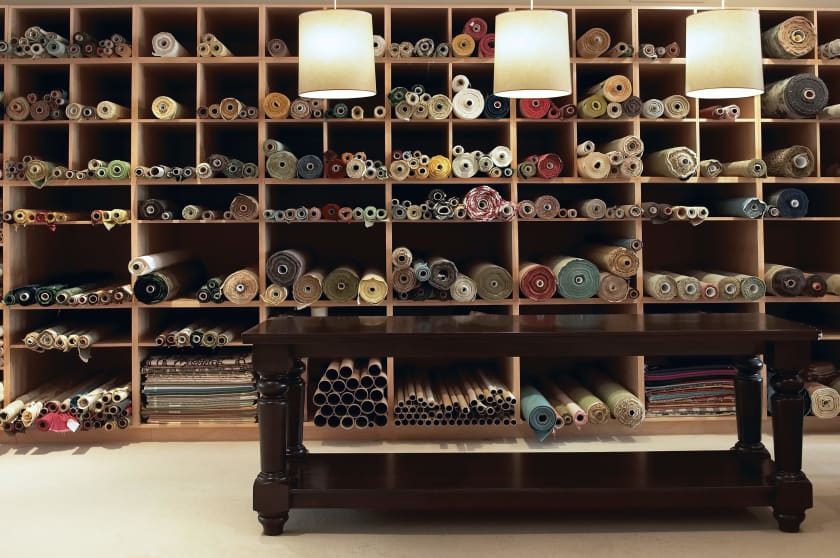Setting Up Your Store For Success With Fabric Selection



Summary: Fabric selection can be a daunting task for any aspiring fashion brand, considering the varied choices of wholesale clothes in composition and weight. There are small differentiations in the fabric that if go unnoticed in production, can cause considerable losses to the company. Setting up a store with clearly classified fabric inventory can serve as a good hunting ground for designers as well as production people.
Right fabric selection is the most important aspect of garment manufacturing. The quality of the fabric and its price point influence apparel standards and the price that it can command in the market.
The current supply chain crisis has underlined the need for mid and small manufacturers to align the sourcing of fabric, so the production process does not face delays due to raw material unavailability.
Factors To Consider While Stocking Up Fabric In Store
Store must-have staples
Having an in-house fabric store that is in sync with the demands of the market is a good idea to start working on for an aspiring brand. A manufacturing unit generally has a fair idea about the fabric that it would require around the year for making its line of apparel.
In most garment manufacturing units, almost 70 percent of the fabric demand is for staples. Only 30 percent is for the variation, depending on the styles and fabrics in vogue.
The staple fabrics are the ones that are required around the year, based on the production cycle, and the nature of the outfits that churn out of the unit. For instance, there are units that only cater to children's wear and would always seek fabric for wholesale clothes.
Add dimensions to physical stores
There are two aspects of having a successful store that makes the task of fabric selection easy for fashion brands.
- An in-house physical store that is reflective of the demands of the designers and the fashion collection in the production line.
- Online fashion stores can act as the second line of replenishing the physical fashion store based on demand.
For building up the physical store and getting the wholesale fabric, certain key things have to be taken care of:
1. The fabric of colors and textures which are highest in demand and usage.
2. The overall procurement cost of wholesale cloths.
3. Preparation for the possibility of price escalation of the staple fabric.
4. Customer/company demand for fabric choice.
5. Fabrics that are likely to trend.
6. Sustainable fabric as per the requirement.
Deploy store management software
Inventory control software to manage the fabric store can smoothen the flow of materials in and around the production unit. It will also help manage the space and organize the racks on the basis of the scheduled production order. Detailed textile classification also enables faster selection and location of fabric in a store.
Efficient inventory control would also facilitate quicker reaction time in planning for production. The visibility of inventory on the basis of the Order Management System (OMS) across the various departments involved in the production — right from marketing to production planning — can facilitate quick response time to any future need.

Consider The emerging digital option
With the digitalization of the supply chain and the advent of companies offering solutions based on technology, there will be a marked shift in which manufacturing companies procure their raw material. Digitalization shall bring seamlessness to sourcing wholesale fabrics and other raw materials, as also the way stores operate at the physical level.
With predictive analytics playing a major role in demand forecasting and assessing the procurement of fabric, there are expected to be strong curbs on waste in the production cycle.
Use Digital platforms as extended stores
There are quite a few innovative digital platforms that act as extended stores for manufacturers and brands. Driven by artificial intelligence, they can contribute significantly to making fabric selection less costly and safer. They also provide solutions that enable all market players to substantially speed up their production cycle time.
A matching algorithm lists search results by relevance while additional filters allow users to select the right fabrics, target groups, required certifications, and even garment treatment types while looking for the right fabric to carry out production.
The comprehensive data on the fabric and the fabric supplier, and quicker and assured turnaround time ensure smooth order fulfillment. Over time, the platform and the fabric procurer can develop an understanding of the needs.
A balanced approach to fabric selection
So far, fabric selection has been a tedious job involving extensive searches on the internet, traveling the world to attend fairs, and trying to get hold of the right wholesaler in nearby areas. All these options make fabric sourcing and selection a time-consuming exercise that could derail the entire production schedule.
The fabric manufacturers have to maintain a well-equipped fabric store for smooth production. Moreover, technology has opened other options for fabric selection that could be cost-saving, enabling a faster lead cycle. Aligning its operations with such a platform can provide the brand with a competitive edge in the market.
Fashinza is a technology-driven platform that provides seamless manufacturing solutions to brands that include design options, fabric sourcing, and production solutions.
Key Takeaways:
- A well-stocked store is key to great fabric selection for brands.
- Brands need to look beyond physical stores and associate with digital fabric platforms.
Partner with Fashinza and forget your manufacturing worries.



















